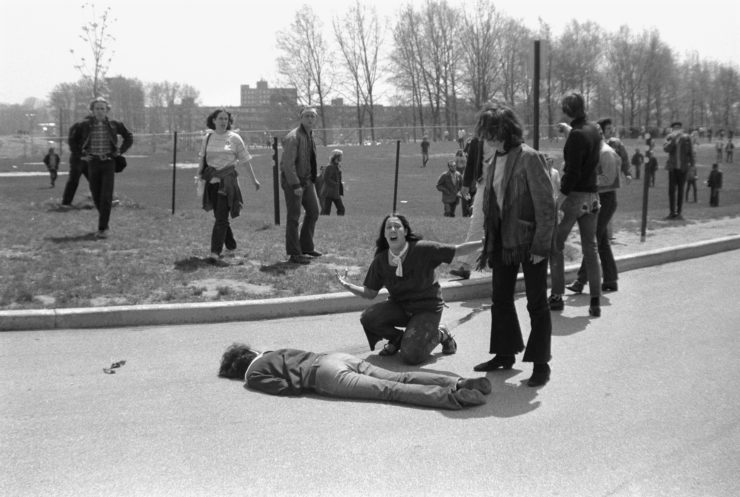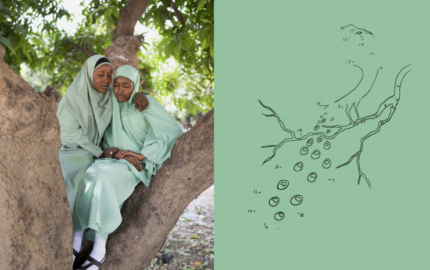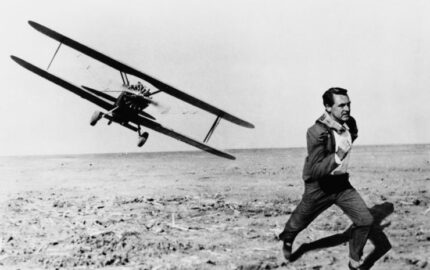As the 1960s came to an end, America was on the brink of a revolution, with the ascendant counterculture challenging nearly every aspect of American society at home while the Vietnam War continued to wage on abroad. Clara Bingham recounts the turbulent time in “Witness to the Revolution: Radicals, Resisters, Vets, Hippies, and the Year America Lost Its Mind and Found Its Soul” (Random House, May 2016), an oral history of the anti-war movement. Compiled from 100 original interviews with activists, radicals, government officials, veterans, and others, the book provides first-hand accounts of key moments—from campus protests, Woodstock, and the Kent State massacre to the Cambodia invasion and My Lai—and introduces readers to the likes of Jane Fonda, Daniel Ellsberg, and Bill Ayers and Bernardine Dohrn of the Weather Underground.
An excerpt:
Friday, May 1, 1970

BOB GILES (Akron Beacon Journal managing editor [and former curator of the Nieman Foundation])
I was managing editor of the Akron Beacon Journal in 1970. Kent State was a local story; the campus is only twelve miles from our newsroom, and we covered the university. Leading into that weekend in early May, we knew there was going to be trouble, and it began Thursday night after President Nixon announced the U.S. was going to be bombing Cambodia. …
Monday, May 4, 1970
JOHN FILO (Kent State student, photographer for The Valley Daily News)
I get the camera to my eye, and I said, Oh, there’s a guy pointing a rifle at me, I’ve got to get a picture of this, because no one’s going to believe it. This is crazy, they’re shooting blanks into the crowd, and that’s when I heard a bullet go by, and I went, Wait a minute. I see this guy’s gun go off, and immediately in front of me is a metal sculpture and the whole sculpture just goes clang and there’s this cloud of rust, and then on the tree right next to me a big chunk of bark goes off. It’s the same bullet. Clang, chhk. It was that quick. And you go, Oh shit, that’s live ammunition! And you just freeze, and the ring’s still going on, and you’re hearing whizzes, and people are wounded here, and there’s people wounded in front of me, and it seemed like forever. Then I turned, and I literally took two giant steps down the hill, and I saw the body of Jeffrey Miller, and there was no one around, it was just a body in the street. …
I started shooting [pictures], and then this girl, out of the corner of my eye runs up and kneels down beside him. I’m like, Oh, I’ve got to get a better angle. I sort of had him in profile. So I kept moving around, but I also knew I was running out of film. You’re sort of counting, like, Oh man, I’ve got maybe three or four frames left. You wanted to shoot this, because you saw this person over the body. Once again, the iconic images that you grew up with as a child, in church. Here we are, we’re looking at the pietà, except Christ isn’t on Mary’s lap. He’s fallen off her lap onto the ground. So you want to shoot this and you’re having this argument with yourself: Shoot the picture, don’t shoot the picture. Shoot the picture, don’t shoot the picture. As you’re having this argument, she lets out this scream. And there’s no debate anymore, you just sort of react to her movement. I shot that, shot another frame, and I was out of film on that roll.
BOB GILES
We had seven or eight journalists on the campus on Monday morning, May 4. A key reporter was Jeff Sallot, who was just graduating from Kent State. We had offered him a job, and he was stringing for us at the time. Jeff got himself positioned in a window on the top floor of Taylor Hall, the journalism school, so he could see what was happening. The students were around, some on their way to class and some protesting, and the guards started throwing tear gas. A few of the kids were throwing rocks and giving them the finger and so on. The guards came up and went past Taylor Hall, went down the hill to the athletic field, and then they turned around and they knelt down in a ring position, which is pretty scary looking. All of a sudden they started shooting. The record says 28 guardsmen shot 67 bullets red fired in 13 seconds. Jeff Sallot had an open line, and he dictated what he was seeing back to the city desk in Akron.
At the moment we were ready to go to press with our main home- delivered edition and we were able to report that four students had been killed and nine wounded.
JOHN FILO
… I called my newspaper in Pennsylvania, The Valley Daily News, and I remember the chief said to me, “Did you get anything?” I said, “I think so.” The newspaper was two and a half hours away. Then we had a little argument. They said, oh, they want to hold it up for the next day’s paper, and I said, “No, if it’s what I think I have, they’re saying it’s a shoot-out, and that’s not the way it happened. It needs to go out today on the national wire.”

JOHN FILO
Papers all around the world ran my pictures, like Asahi Shimbun, you name it, all the great papers. … But what immediately started, within forty-eight hours, was the hate mail. I got tons of hate mail and tons of calls. We had to disconnect the phone.
“It never happened, you set up the photos.” “You’re part of the conspiracy to bring down America.” …
Further reading
I had to stay at Kent another year. As a matter of fact, I took a job at the AP. I am still working in that same place, Taylor Hall, when the Pulitzers are announced, the next year; it was almost to the day. …
A day or two later I received a letter. It was from Eddie Adams, who had won the Pulitzer in 1969. The letter said: “Congratulations, kid. Let’s see what you can do tomorrow.”
Excerpted from WITNESS TO THE REVOLUTION by Clara Bingham. Copyright © 2016 by Clara Bingham. Excerpted by permission of Random House, A Penguin Random House Company. All rights reserved. No part of this excerpt may be reproduced or reprinted without permission in writing from the publisher.

